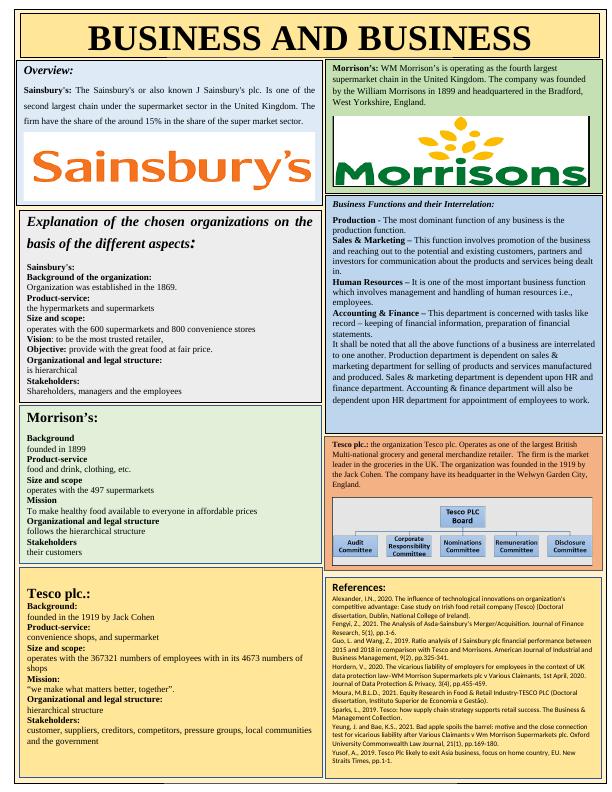Business Functions and Interrelation: Sainsbury's, Morrisons, Tesco plc.
2 Pages2525 Words336 Views
Added on 2023-06-05
About This Document
This article discusses the business functions and interrelation of Sainsbury's, Morrisons, and Tesco plc. It covers their background, product-service, size and scope, vision, mission, and stakeholders. The article also explains the advantages and disadvantages of business functions.
Business Functions and Interrelation: Sainsbury's, Morrisons, Tesco plc.
Added on 2023-06-05
ShareRelated Documents
End of preview
Want to access all the pages? Upload your documents or become a member.
Types of Organizations and Stakeholder Requirements in Business Environment
|7
|1380
|90
Pestle and Swot analysis of Tesco plc
|14
|3448
|184
Accounting Financial Analysis Report
|21
|4907
|439
Understanding and Engaging in the Customer Experience
|23
|7018
|73
Analyzing Competitive Environment and Logistical Operations of TESCO
|11
|3780
|1
Understanding and Leading Change : Tesco Multinational Company
|14
|5248
|78

